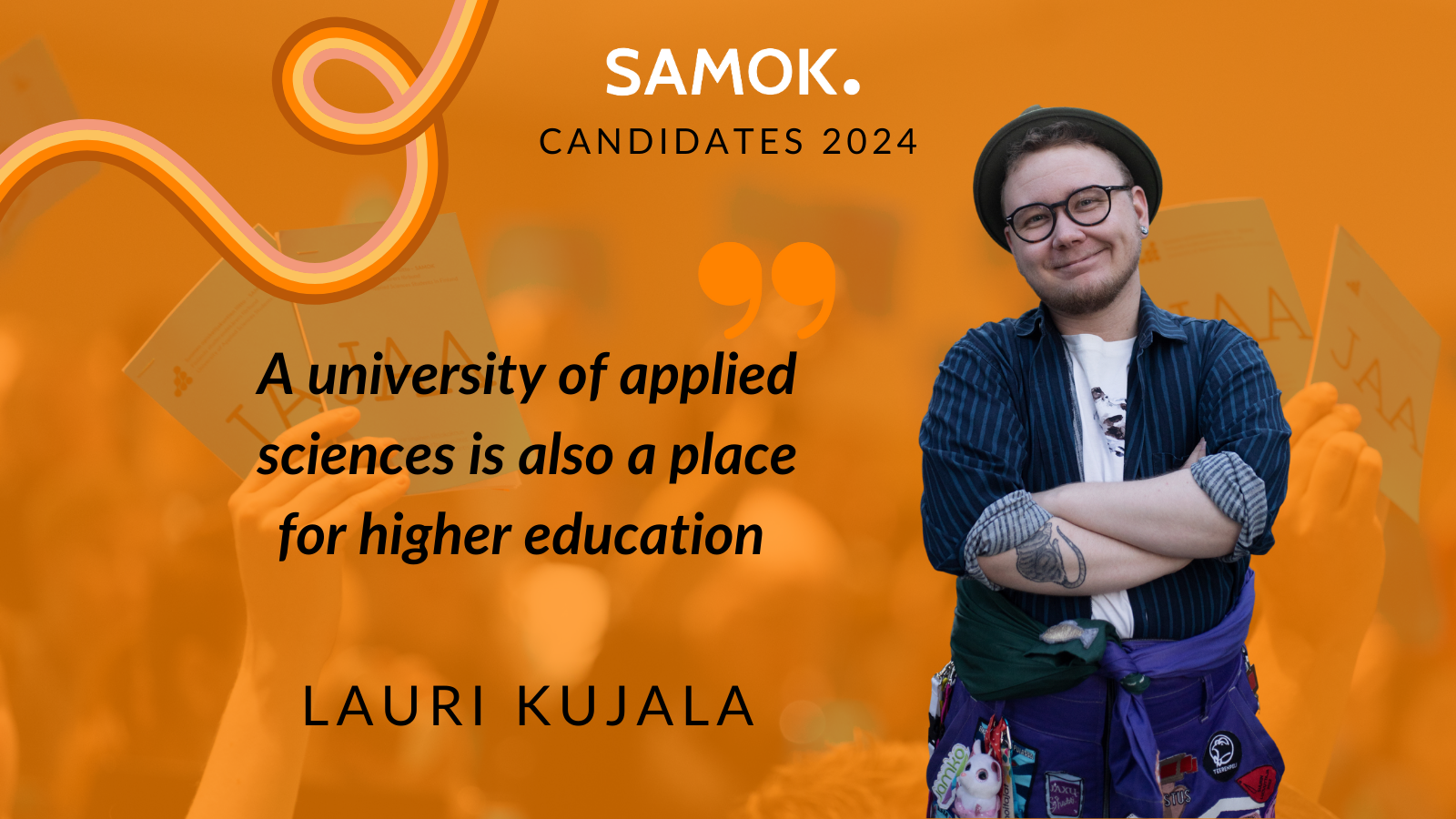Already in the spring, after the elections, concerns began to arise about how our university of applied sciences students will fare when the new government starts working on the government program. In the summer, it became clear that a cold ride was coming, but in the fall, numerical values came clear for that ride. Students’ livelihoods will be cut from almost every corner, not to mention those studying with adult education support, from whom the social benefit in question will be cut from August 1, 2024. This hits almost directly on those studying at the University of Applied Sciences.
The answer to this situation from the government is to take out more loan or go to work. There is a limit to the withdrawal of a student loan, and it is not equal that one group of people has to finance their lives with a loan. Going back to the saying “You should go to work”. What if the studies include an average of ten weeks of unpaid internships and courses that require attendance per year? With what resources does the student do the required tasks and recover? In the general conversation, it is easy to forget that our UAS students’ studies include internships, which in terms of load correspond to real work, and to this comes the pressure to learn at the same time as an additional load.
This raises concerns about how little our society knows about the university of applied sciences and about us, its students. I had a good conversation with ME, who was selected from the central Finland’s election district about terms higher educational institution and student of higher education. I have always thought that the term “higher education” refers to all schools that provide higher education , universities, universities of applied sciences and art universities, but the discussion mentioned above opened my eyes to the fact that not everyone thinks this way.
UAS’s history is quite short when viewed from the other side of the dual model, but that cannot be a reason not to invest the same amount of resources in UAS education. Directing resources is a choice of values, and this sadly seems like the UAS education is not seen as valuable as other higher education. From UAS experts in fields suffering from labor shortages, export and technology professionals and many other experts who keep this welfare state going are graduated. For example health care is largely run by people with an UAS background. In addition to this, more and more different innovations and applications are being developed for the needs of working life, which benefits the business life. Now is the time to acknowledge this and eradicate the negative atmosphere of attitude towards UAS education and students.
SAMOK does national advocacy work, but that alone is not enough if we want UAS education and its students to be valued all over Finland. In this mission to make UAS education and students visible and heard through their activities every active student and every student union plays an important role. We, the student unions, are in an important position in ensuring that more and more decision-makers have an UAS background in the future, because the fire of many student activists to influence goes a long way when given the right tools and support in the beginning.
Supporting the student unions for local influence is important, as it also lowers the threshold for lobbying. This support can include training on how to lobby decision-makers or how to find targets for lobbying, but it would be important to listen to the needs of student unions for that matter. There are different student unions, because no two student unions or cities are the same in which to work.
By supporting the student unions in their local lobbying it is ensured that no one is left without a clue about UAS’s or its students.
Written by Lauri Kujala, candidate for SAMOK President in 2024
During the autumn, SAMOK’s blog and social media will present the candidates for SAMOK’s board for 2024. For more information on the General Assembly, click here.

